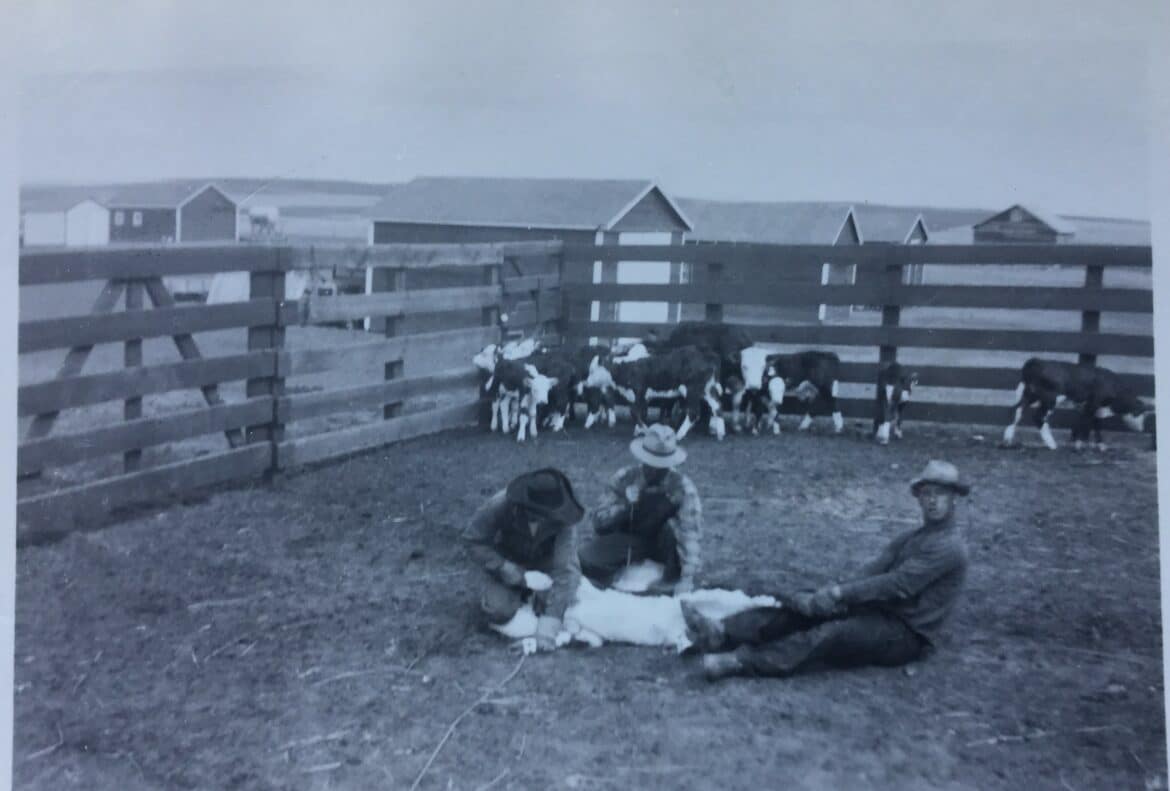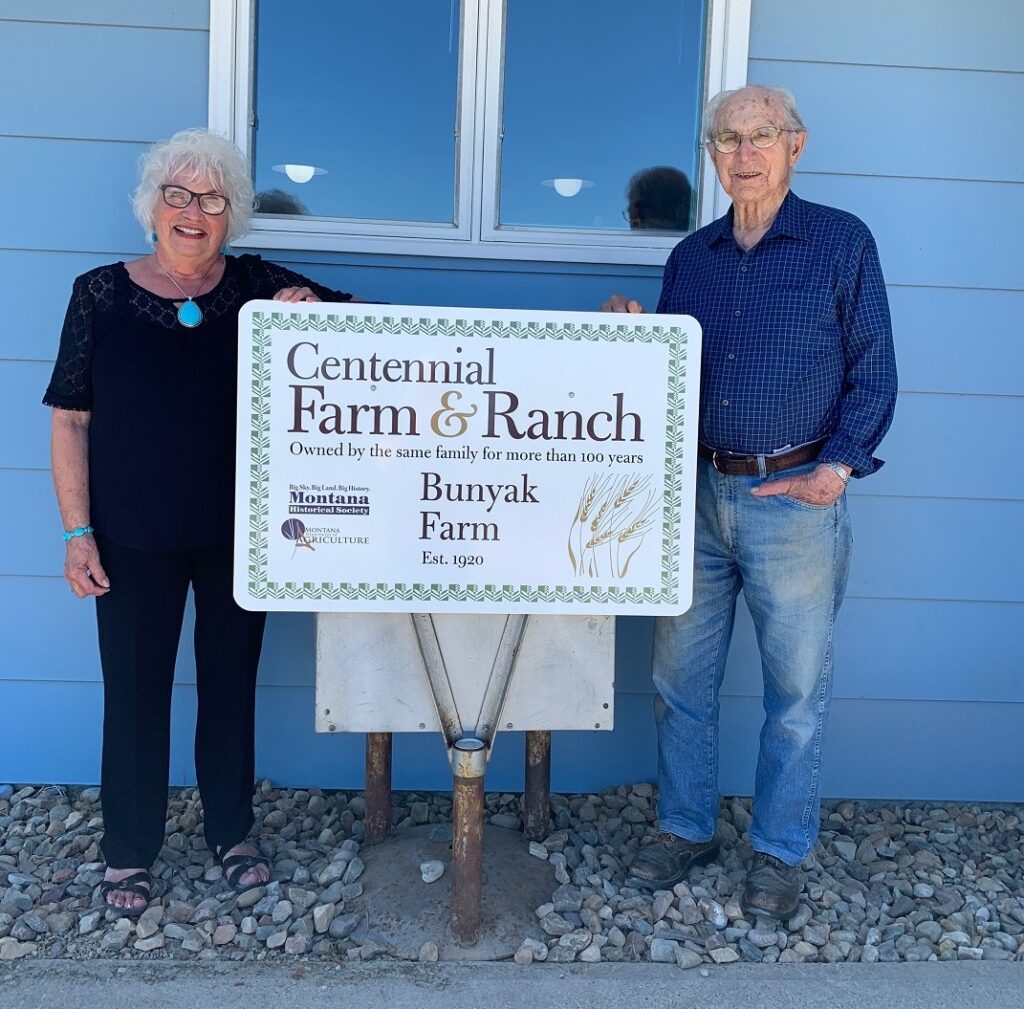
Since 2010, the Montana Historical Society’s Centennial Farm and Ranch program has recognized our state’s agricultural traditions by celebrating the perseverance and stewardship of Montana families on their farms and ranches.
Bunyak Farm, 1920
Sunburst, Toole County
In 1887, Jànos “John” Bunyak emigrated from Gönc, BorsodAbauj-Zemplen, Hungary, to the United States through Castle Garden, New York. John married Elizabeth Levai and in 1892, they moved to Canada to homestead 160 acres in Kaposvàr, Assiniboia, south of Esterhazy, Saskatchewan.
Searching for better opportunities offered by the Enlarged Homestead Act of 1909, John claimed land between Sweet Grass and Sunburst in 1910, and their son Steve also claimed a 320-acre homestead across from them around 1912. Steve then began the arduous process of plowing, planting, and building a home and reservoir. By 1916, Steve was raising crops on half the land and using the other half to graze cattle and horses. In 1917, he enlisted and fought with the 91st “Wild West” Division to free France and Belgium from German occupation during World War I. After his return, he married Russian-born immigrant Katherine Losing in 1920, and a month later received official title to his land.
The couple weathered hard times, especially between 1920 and 1922, when there was not enough rain and cutworms ate the crops. They had their first son Woodrow in 1921, followed by Vera in 1922, Stanley in 1930, and Delia in 1940. During the 1920s and 1930s, the Bunyaks raised pigs and chickens, forty to fifty cattle, and about five milk cows, and grew grain crops. By 1941, times were a bit better, and they expanded the farm an additional four hundred acres.
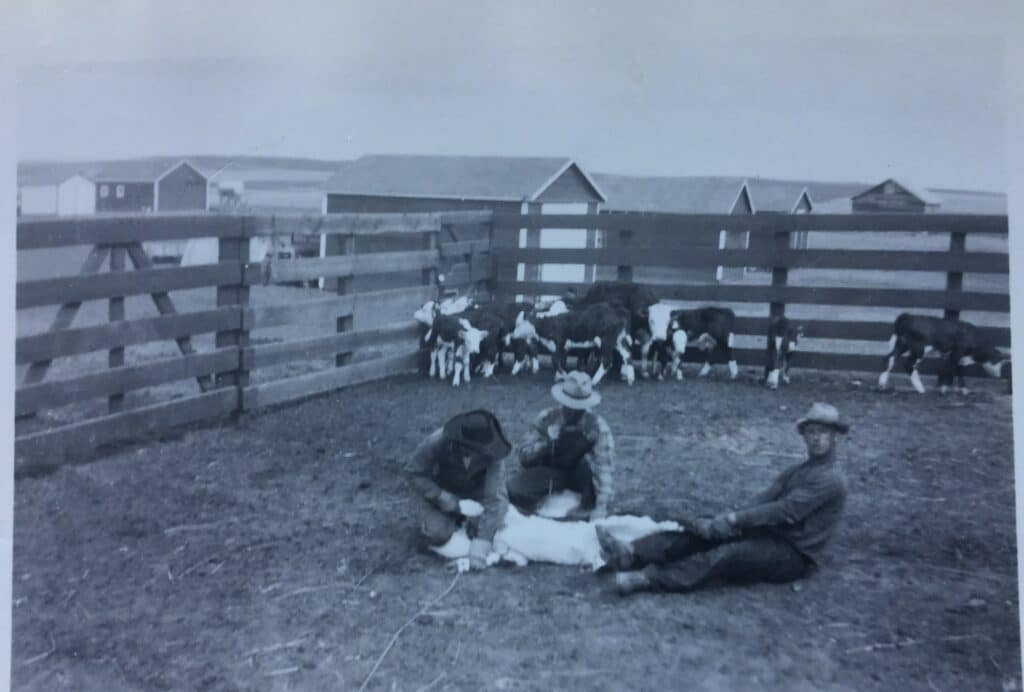
In the early 1930s, they built five wood-frame grain bins and in 1938, began construction of a big red barn. The story goes that eight-year-old Stan was better than his father at driving their double-clutch 1934 International B3 truck, so he drove Steve the 354-mile round-trip to Columbia Falls to pick up the lumber. The barn was completed by 1941, and running water to the farmhouse came via a low-yield well and windmill pump system. Electrical service finally arrived from the Marias River Cooperative in 1948 and indoor plumbing in 1960. Water is scarce in this region, so plumbing required the Bunyaks to install a ten-thousand-gallon concrete cistern and haul water from Woodrow’s well five miles away.
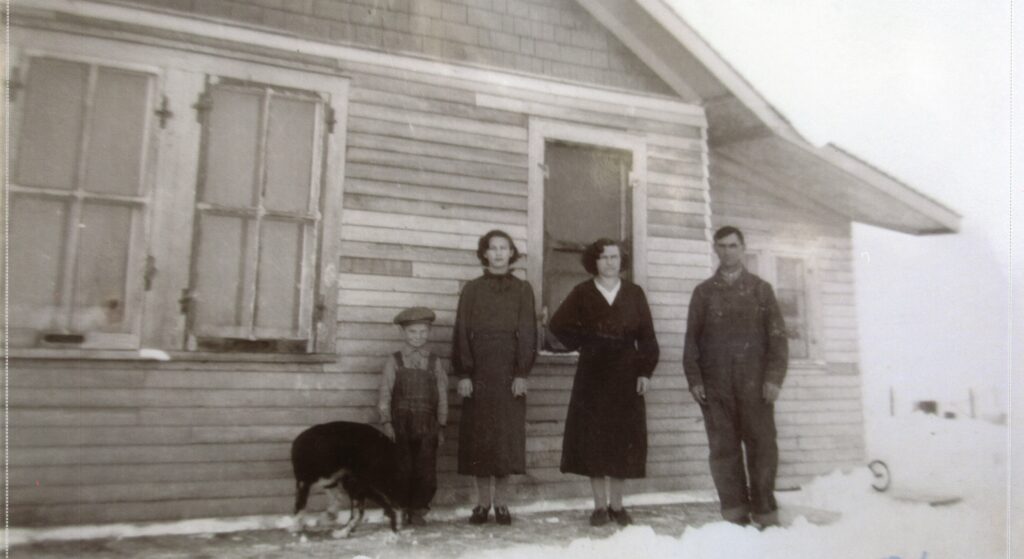
After 1941, most of the Bunyaks moved into Sweet Grass, although Woodrow stayed on the farm and Stan worked there on weekends and all summer. Woodrow married Mary Angyal in 1946, and they continued to farm but also acquired their own land in Glacier County. In 1951, Stan was drafted into the U.S. Army, but he returned to take over farm management from Woodrow in 1953. He began purchasing the farm from Katherine in 1954.
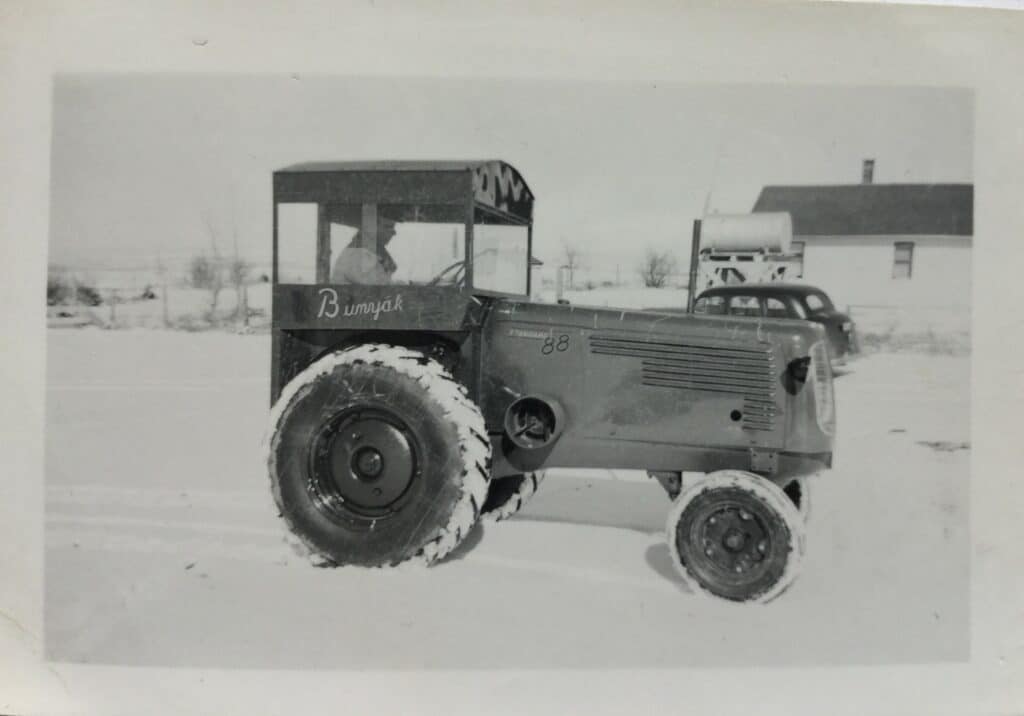
In 1957, Stan married eighteen-year-old Gladys Bianchi from Aden, Alberta, Canada, and they continued to farm. They built a new house in 1972 and expanded the farm by another 320 acres. At age ninety-one, Stan “retired” after fifty-eight years of farming, but as of 2021, he and Gladys were still working on the farm and leasing the farmland to another local farmer.
Since 2010, the Montana Historical Society’s Centennial Farm and Ranch program has recognized our state’s agricultural traditions by celebrating the perseverance and stewardship of Montana families on their farms and ranches. The MHS accepts applications for the Centennial Farm and Ranch register all year. Requirements for induction include:
- Must be a working farm or ranch with a minimum of 160 acres or, if fewer than 160 acres, must have gross yearly income of at least $1,000.
- One current owner must be a Montana resident.
- Proof of founding date and continuous ownership by members of the same family beginning with the founder and concluding with the present owner, spanning minimally 100 years. Line of ownership may be through spouses, children, brothers, sisters, nephews, nieces, or adopted children. For homesteaded properties, ownership begins with claim filing date (not patent date).
- $100 fee
To download all requirements and the application, or for more information, visit https://bit.ly/mtcentennialfarms; email christine.brown@mt.gov to request a copy by mail; or call Christine Brown at 406-444-1687.

